Ben McCormick takes a sip from a can, and is instantly transported to Flanders.
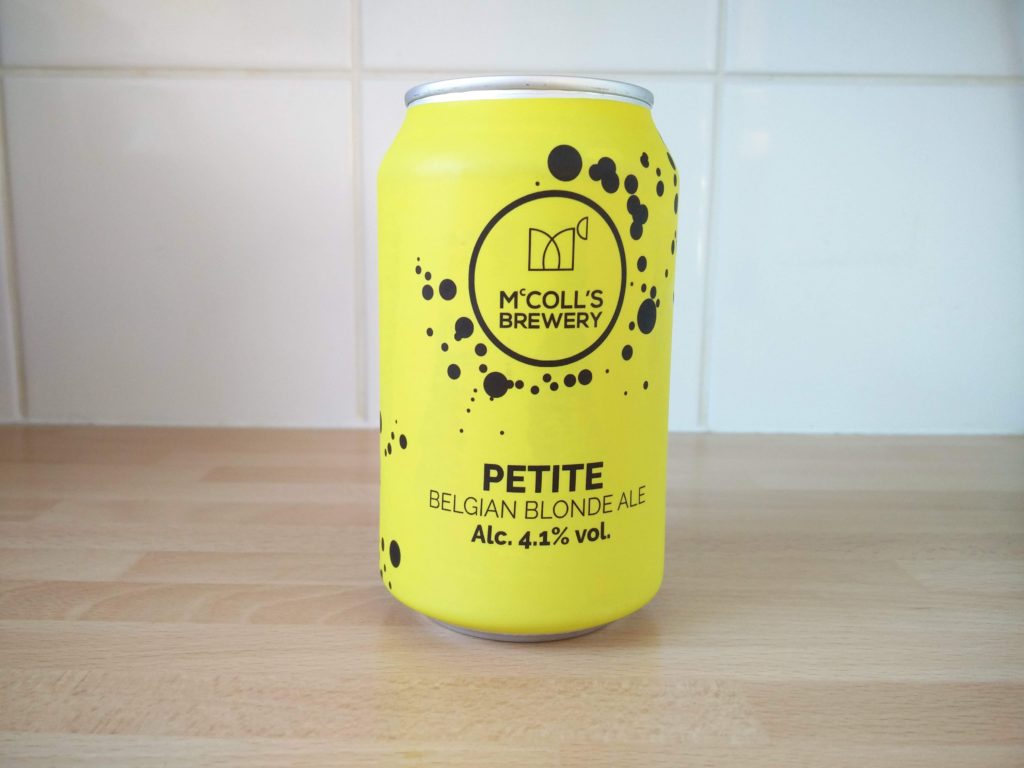
Magnificent things, our senses. Each one a delightful interface with the alien atomic matter we encounter every living second, and all blessed with the ability to provoke powerful memories or threads of long-forgotten thoughts that lead us tumbling down paths trodden years since. Tiny fragments of sound can cast us daydreaming into the void of prior lives while the merest whiff of a scent once smelled is enough to paint a canopy of wonder worthy of several hours’ horizontal musing. They each put us in touch with remnants of our past, doubtless for a damn good reason scientists can explain without breaking a sweat. And if one is missing, it’s as if its power is shared among the remainder, amplifying them. Who hasn’t closed their eyes listening to a piece of music to more fully appreciate the joy?
But the big daddy of them all is smell. Not just in terms of sheer numbers – we are apparently able to detect around one trillion smell stimuli – but also when it comes to how deft it is at jogging our memories. Our sense of smell works the part of the brain known as the piriform cortex, which is just behind the olfactory bulb. Delving deeper, it’s this part’s proximity to the hippocampus and amygdala – both strongly associated with retaining memories – that explains why smell has the greatest power of all the senses to pitch us effortlessly into barely controllable bouts of nostalgia.
In fact, so domineering is our sense of smell that it feels quite justified in having a huge influence over our sense of taste too; overwhelmingly when it comes to memory recall. So I obviously have my massive nose to thank for the mind cascade provoked by the first draught I took from this cracking little can.
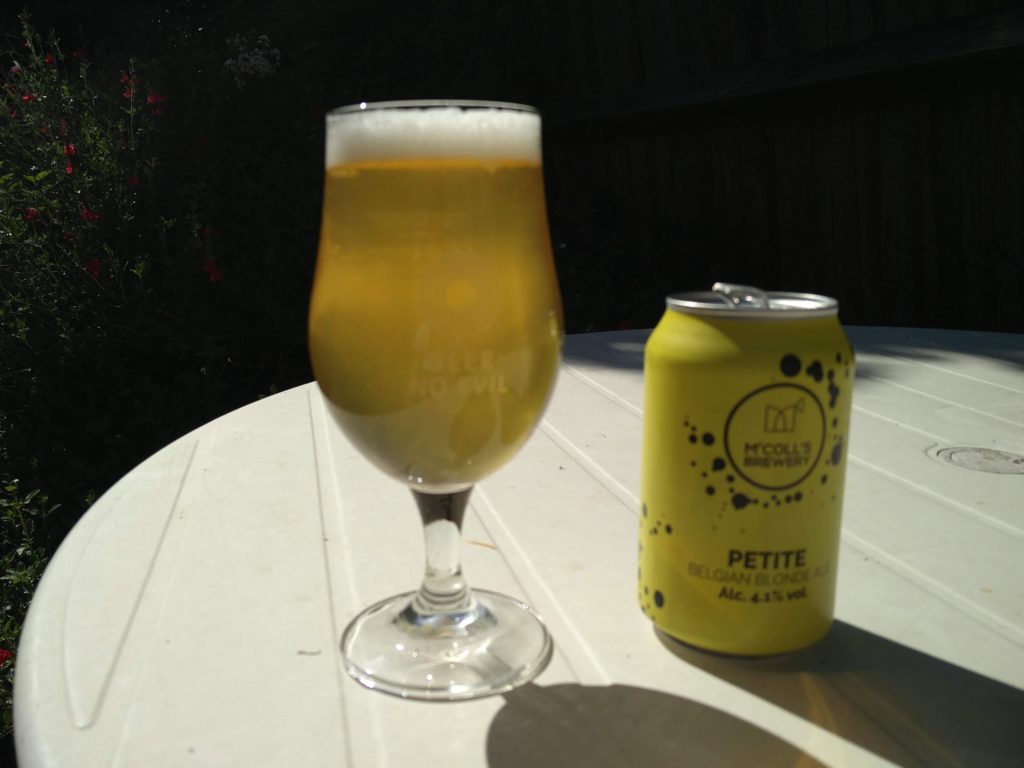
McColl’s has been brewing in Bishop’s Auckland for three years, quietly and assuredly producing traditional beers updated for a collective palate that is now, frankly, a spoilt brat. The core range includes a bitter, a porter and an IPA, but it’s the Petite Belgian blond ale that first catches my eye. Pale yellow of hue and with a low alcohol by volume count that’s probably for the best under the current circumstances, this is a nod to the ‘small’ beers sometimes made by and for Trappist monks, often as a by-product of the stronger stuff they flog to the outside world. Patersbier, literally ‘fathers’ beer’, was made from the ‘second runnings’ and has significantly lower fermentable sugar content. It’s essentially water that ‘rinses’ the grains following the mash process, picking up some flavour on the way through. This wort then makes an ale that can be drunk in reasonably large quantities to slake the thirst without rendering the drinker unstable.
And we all need some stability in these trying times, right? Fortunately, a beer of this strength means you can happily swig one over lunch and still get things done in the afternoon, should you need to. It was on one of the rare occasions of downtime during this lockdown that that I first tasted this beer – a good job too. From the first satisfying, thirst-quenching sip, my olfactory neurons went berserk.
Somewhere near the end of a thousand-yard stare, I’m sitting at a stripped-by-rain wooden table outside a converted barn on a smallholding just a couple of kilometres north of Poperinge, East Flanders, in the warming late May evening sun. The geometrically interesting complex of buildings has been repurposed as a B&B now, though it steadfastly refuses to shed all vestiges of agriculture. Antediluvian farm machinery sprawls across the courtyard and domesticated animals low in the background. All around is buzz, moo, chirp, bleat and trill. But the real sensory delights are indoors in the fridge. Bottle upon bottle of delicious Belgian beer stands proud behind a glass door, almost queuing up to be drunk. In the flimsy wooden cabinet beside is one of the finest collections of glassware I have ever seen, which means I can match the beer with its corresponding vessel every time – practically the law in Belgium anyway. As the evening draws in, I opt for ever-stronger ales in the mistaken belief they’ll provide an alcoholic barrier to the encroaching cold.
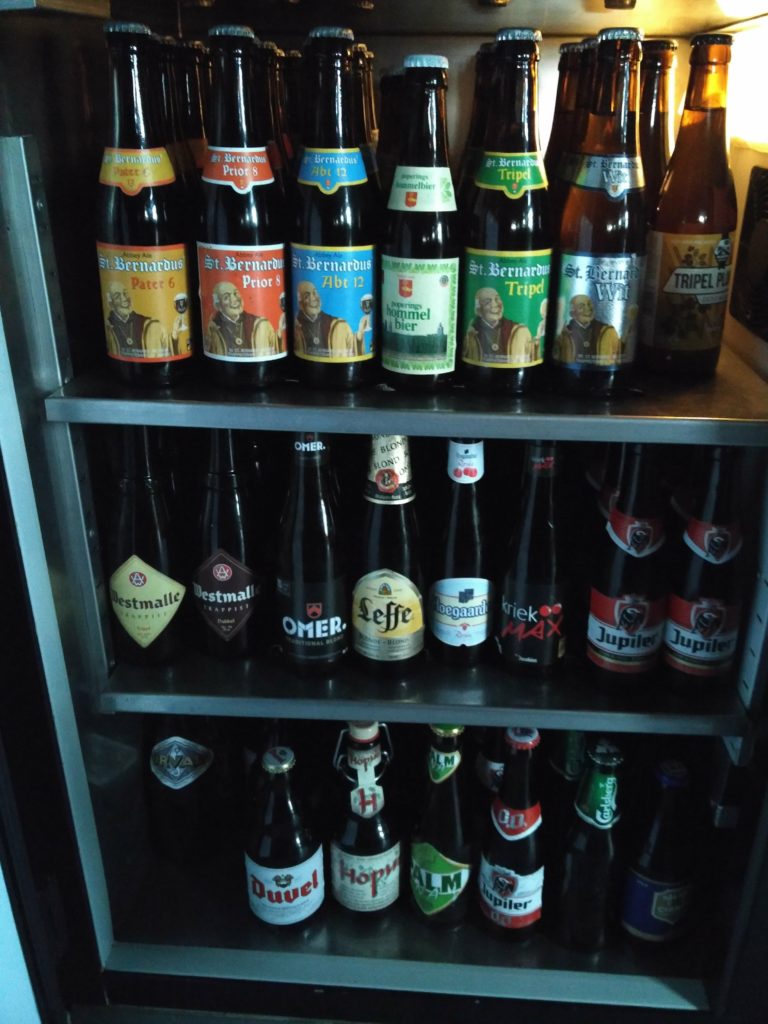
Another gulp from the yarrow-coloured can and I’m gazing across a picture perfect field of barley that stands motionless in the stifling heat. Not even a solitary wave from any of the millions of stalks that coir mat their way towards the horizon. Bland Dutch cheese, mean mustard and sharp pickles. And again, the estery, zesty blond washes over my palate as I snatch a moment of calm before dashing home to catch a dying mother before she leaves.
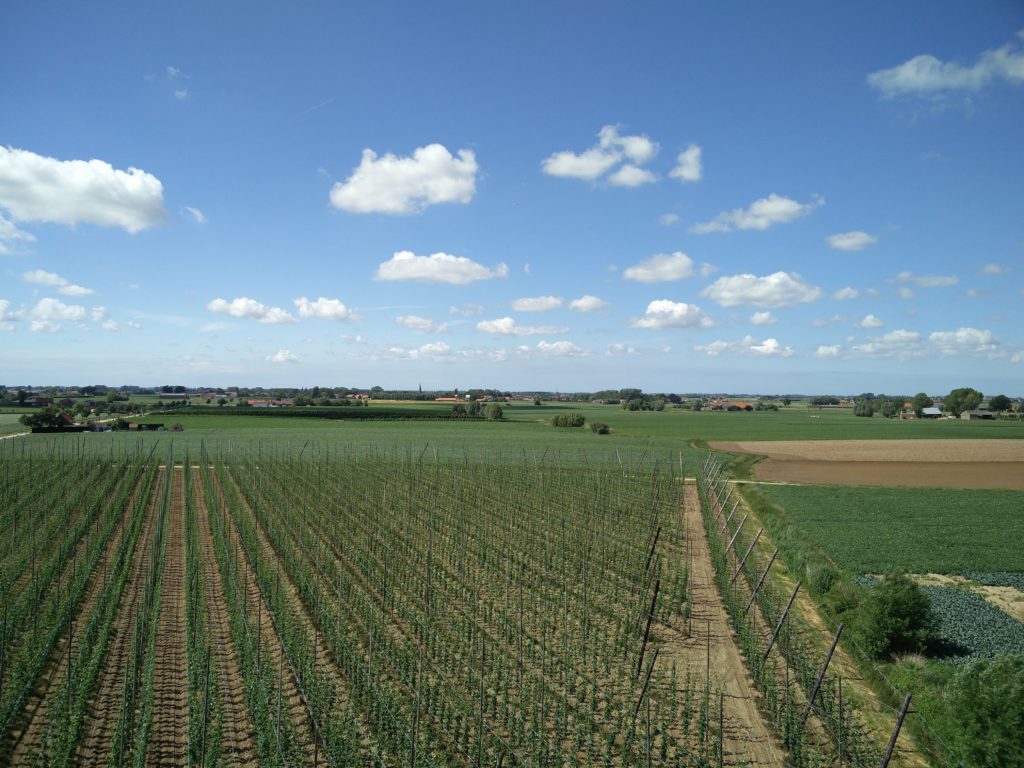
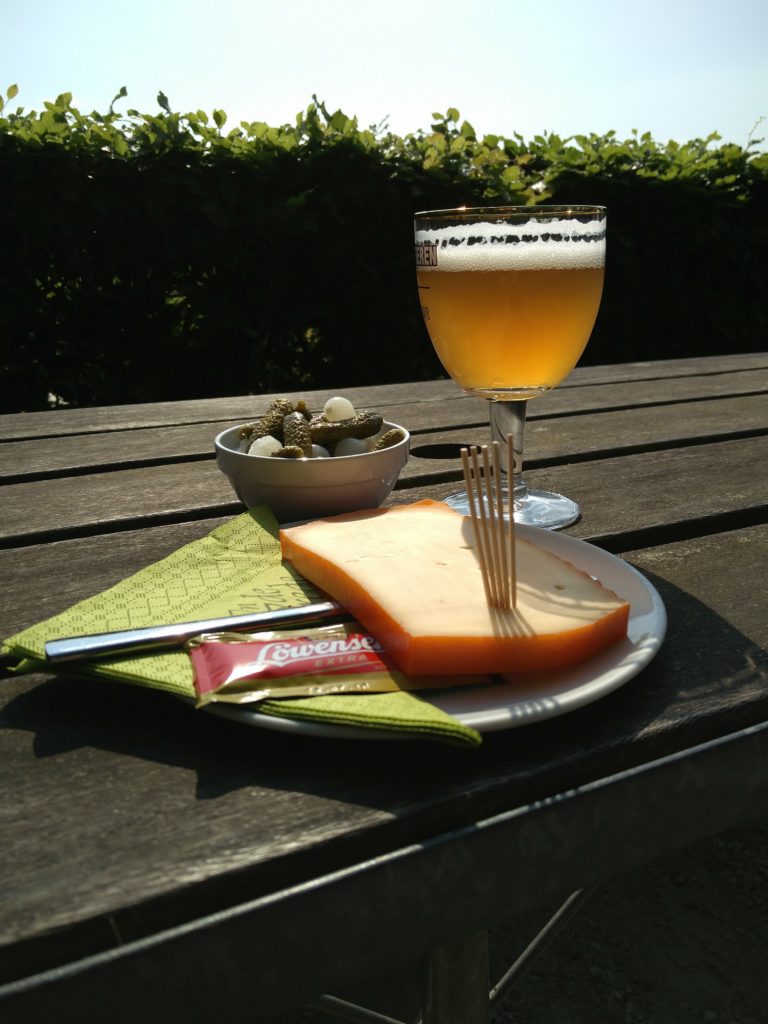
Sip again and I emerge from the slowest lift ever created and grace a windy rooftop bar, all glass, marble, solid wood and surrounded by miles of ironed landscape. Acre upon acre of hop bines carpet the nearby fields and the midsummer’s breeze is warming, reassuring. I revisit the can and instantly quench the dust-parched thirst of a thousand Flandrian toilers crossing the finish line in Oudenaarde after 260 kilometres of cobbled hell, surrounded by lumpen concrete and vehicles that must at some stage have looked futuristic.
Each taste lifts me gently out of my rain-stained, white plastic seat and places me unmistakably in another world. It’s true too much drink dulls the senses, but there is clearly a sweet spot and, without even looking, I’ve uncovered it no more than halfway through this can. It makes my mind meander through several thousand here-and-nows in places far and near and I’m drinking it all in while the sun pins me in its south east London trap. Unable to travel the 260 miles or so to the region that gave birth to this style of beer – or to the County Durham-based brewery that makes this version – I console myself with the kind of booze-fuelled mental wandering a beer of this quality can engender; surely the next-best thing.